

You can read the previous part of this blog entry in The hike to the hills South of Chilac.
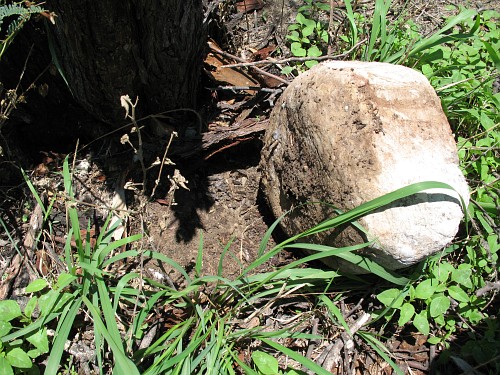
After I had taken photos of the juvenile gecko, Esme and I drank some water. It was getting really hot. In front of us, looking west, was a slope with cactuses and low shrubs. We decided to walk parallel to the slope, following the dirt road, with trees to the right.
The slope curved, and we decided to follow the curve, walking to the west. To our rights we could see fields. The soil consisted of dry mud with cracks on it. Here and there I could see sun bleached bones resting on the mud. Low shrubs were growing on the mud fields. After some time we came upon a more green section; low trees, shrubs, and cactuses. When I rolled over a large stone I saw a scorpion (Vaejovis species). But before I could get my Canon A640 ready it was gone from view. So I made a photo of just the uncovered hiding place.
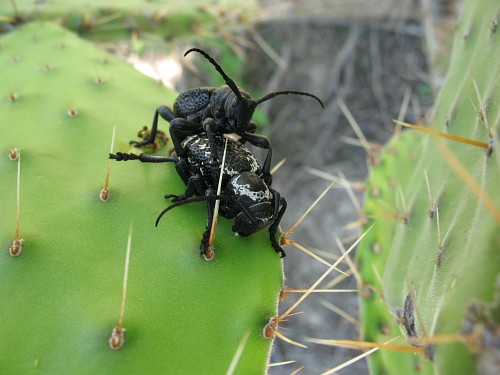
I was a bit ahead of Esme and Alice when I reached the end of the section with vegetation. I looked around a bit, and then I noticed a pair of beetles mating on the cactus stem segment of a prickly pear. When Esme arrived she thought I was taking photos of the cactus in a weird way. Then I pointed at the beetles. Esme's remark was probably to the point: "That's a safe places for those beetles, the spines offer quite some protection".

We decided to have a break in the shadow of a tree, on the edge of the green section. I helped Esme to get Alice out of the rebozo, so Alice could walk around a bit. Soon Alice was pointing at the cactuses that were growing in the shadow of the tree. From a very young age we have been telling her not to touch cactuses, and most of the time - but not always - she is very careful when near them.

Esme made a makeshift swing out of the rebozo, and played a little with Alice under the tree. After some resting I decided to explore the surroundings a bit, while Alice and Esme rested some more. I looked under some stones, and found a large centipede under one, but no scorpions.
When I returned to Alice and Esme, I rested a bit more with them. We watched a few of the large lizards running around near shrubs. The same species, Aspidoscelis sacki as we had seen yesterday, during our hike west of Ajalpan.
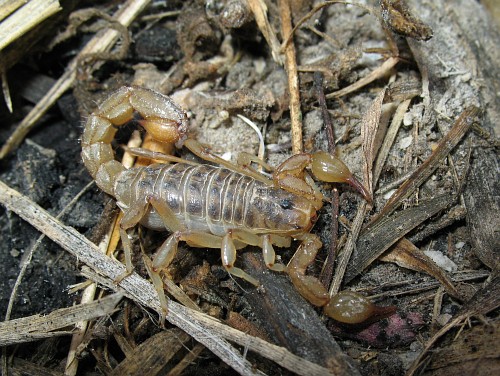
After the break we walked in south-west direction. Soon we came upon a slope, on which reeds were growing; another ditch with muddy water. We couldn't find a bridge, so we kept walking parallel to the reeds, roughly going north west this time. There was no track, so we just walked over the mud fields. On one section the mud was very wet, so we had to walk carefully. After some walking we came upon a dirt road. To the left I noticed several pieces of concrete, near a small ditch of water. I looked underneath some of the pieces, but no scorpions. A bit further away I noticed a bunch of dried reed stems resting on a piece of concrete.
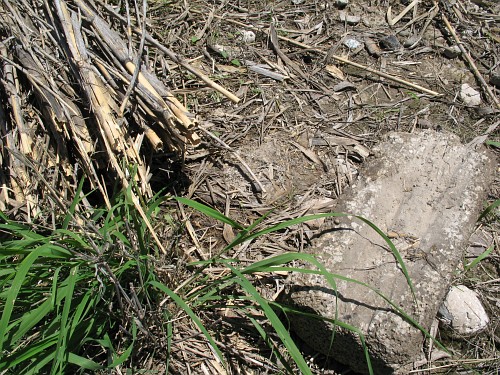
First I moved the reeds to the side, and then I rolled over the piece of concrete. And yes, a scorpion (most likely Vaejovis species) was resting on top of some dead plant material on the uncovered soil. I took a few photos of the scorpion, while Esme assisted by blocking out some direct harsh sunlight. I also took a photo of the uncovered hiding place and the direct surroundings; the microhabitat of this scorpion.
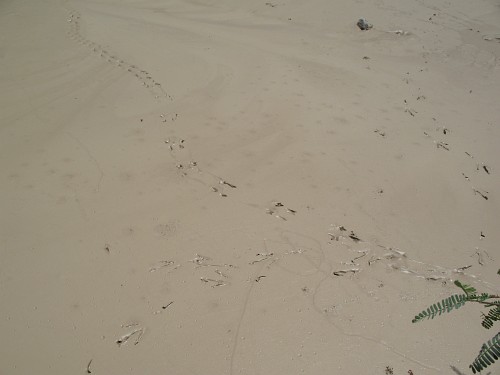
Nearby was a large tree, providing a lot of shadow, so we had another break, a short one this time. After the break we kept following the road going west. Since the ditch curved towards the north, it looked like we had to follow it. But then we noticed a muddy ford with some sandy spots. By carefully stepping on the sand we managed to get across without getting water in out shoes. The other side was an area covered in wet mud, so we had to be very careful where to put our feed. We could see tracks in the mud; tracks made by birds, dogs, and humans.
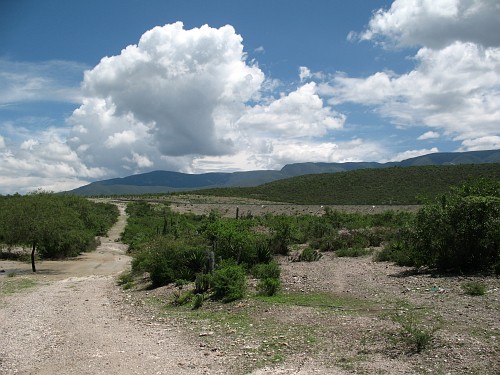
In front of us, looking to the south-west, the landscape had changed; shrubs, low trees, yuccas, and cactuses. In the distance we could see the super-highway Cuacnopalan-Oaxaca, and the hills; the original goal of our hike. But since it was already close to 3 o'clock, we decided to follow the dirt road near us, back to Chilac. I can't recall who said it first, but some parts of the surroundings looked like a well planned cactus garden...
Read the third and final part of this blog entry in The walk back to San Gabriel Chilac.